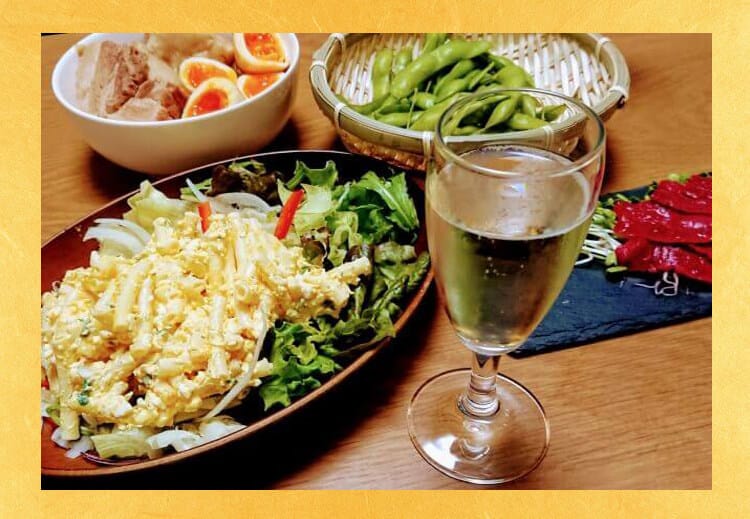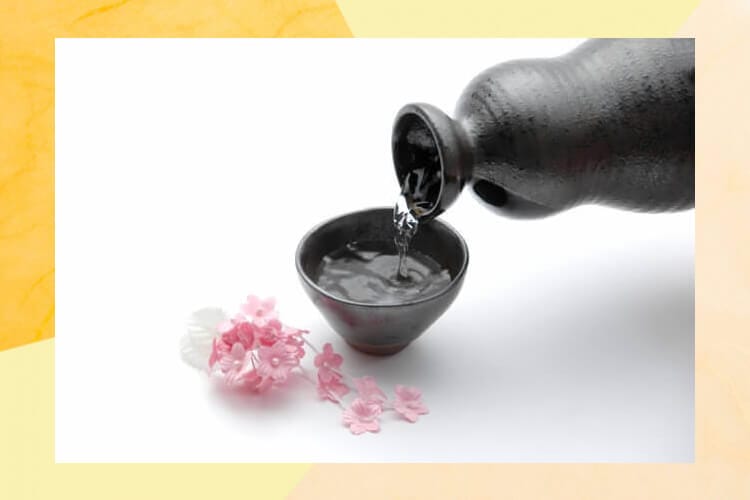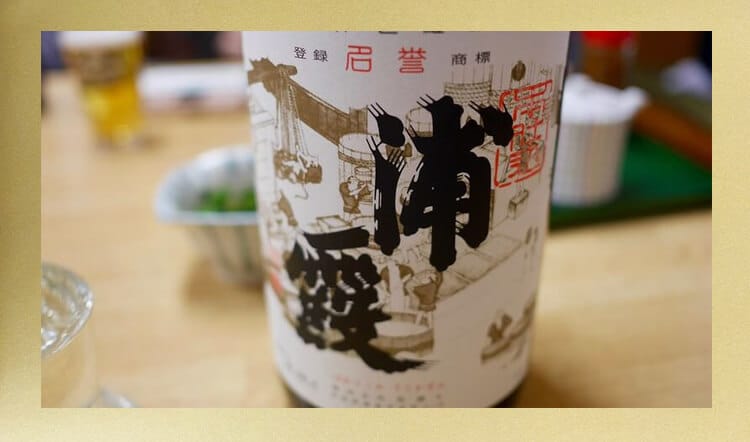
Toji's hands are beautiful
https://www.instagram.com/p/B4YnIDKgea9/?utm_source=ig_web_copy_link
It is said that there are many people who are involved in sake brewing, such as Touji, Kurodo, and the landlady of Kura. In fact, it is also introduced as a catch copy in luxury cosmetics commercials and uses sake ingredients. In addition, beauty products containing the ingredients of sake have been widely found in various places. For example, Asahi Sake Brewery (Yamaguchi Prefecture), which brews “Dassai”, produces “handmade sake lees soap” and is derived from sake developed by “Hakushika” (Hatsugo Prefecture, Tatsuma Honke Sake Brewery). Cosmetics containing the component "α-glucosylglycerol (αGG)" are also popular among women with high aesthetic sense. α-Glucosylglycerol (αGG) is a rare ingredient that contains only XNUMX gram per XNUMX ml of sake. As a result of research, it has become clear that other ingredients have a fat burning effect that is incomparable to other ingredients, such as moisturizing ingredients and lift-up effects, which are essential for skin care. Α-Glucosylglycerol (αGG), which has not only cosmetics but also a moisturizing property and a soft and smooth texture, is characterized by having a moisturizing component and a soft and smooth texture, so it contains α-glucosylglycerol (αGG). Fiber has also been developed and sold as women's inners and blouses. Fabrics containing α-glucosylglycerol (αGG) are said to have the effect of improving skin moisture content compared to unprocessed fabrics.
Rice koji, which is indispensable for sake brewing, contains many substances that prevent spots and freckles and keep the skin white, and are said to have a beautiful skin effect. Kojic acid is responsible for the whitening effect. Kojic acid stops the action of the enzyme that produces the melanin pigment of the stain.
When we are exposed to UV light, melanocytes (melanocytes in the basal layer of the epidermis) are activated and produce melanin pigment. Melanin pigments appear black on our skin to protect cells, that is, to reach the depths of the skin and prevent damage to the cells. Continued exposure to intense UV light also increases the number of activated melanocytes themselves, resulting in an excess of melanin pigment. This causes spots and freckles.
Kojic acid is said to have a high whitening effect because it inhibits the enzyme that produces melanin in melanocytes, preventing damage to the skin.
Various effects of rice koji not limited to whitening
Rice koji has also been found to be effective in oxidation, one of the causes of aging. Deferifericrysin (Dfcy) contained in rice koji has antioxidant activity that eliminates reactive oxygen species that cause lifestyle-related diseases, chronic diseases, aging, cancer, etc. Presented at medical conferences by Medical University. The human body has enzymes that eliminate active oxygen such as superoxide dismutase (SOD) and antioxidants such as ascorbic acid (vitamin C) and α-tocophenol (vitamin E). Will be removed. Deferifericrysin (Dfcy) has been found to be as effective as the known antioxidants ascorbic acid (vitamin C) and ferulic acid. Ingestion of rice koji reduces active oxygen species in the body And reduce the risk of disease.
What is ferulic acid?
Ferulic acid is a type of polyphenol contained in plant cell walls and is found in most vegetables and fruits. In addition, to effectively use its strong antioxidant effect, it is expected to prevent discoloration and fading and suppress bacteria, and it is also used as an antioxidant for things familiar to us, such as sweets and desserts .
Like vitamin C and other polyphenols, it prevents the oxidation of cells from the toxicity of active oxygen, and has an excellent effect on improving brain function and whitening.
Until now, it was artificially produced by chemical synthesis, but in recent years, technology has been created to extract rice bran (rice bran), and it has come to be used in health foods and cosmetics.
Antioxidant activity as a food additive and inhibitory effect on melanin production in cosmetics have been confirmed, and its effects on bacterial control, ultraviolet absorption, and Alzheimer's disease (Chiho) have also attracted attention.
Effect of ferulic acid
Prevent Alzheimer's disease
Two-thirds of Japanese deaths are attributed to lifestyle-related diseases, and it is known that lifestyle-related diseases are greatly involved in dementia. According to the White Paper on Aging Society prepared by the Cabinet Office, the number of elderly people with dementia was estimated to be about 2012 million in 462 (about 65 million 3000-year-olds), and 10 years in about 1.5 years. It is expected to increase twice. It is said that the number of patients with mild dementia (MCI), which is called the "reserve for dementia", will be about 1300 million.
Ferulic acid has a role to protect against β-amyloid peptide, which causes inflammation from oxidative stress in the brain, and is expected to prevent Alzheimer's disease. Beta-amyloid peptide is a waste product produced when the brain is activated. Commonly known as "trash in the brain"'Also called. The accumulation of this substance is thought to trigger Alzheimer's disease. Recent studies have shown that this reduced amyloid β peptide excretion is linked to Alzheimer's disease.
Ferulic acid is expected to be effective in preventing aging of brain nerve cells, which decrease with age, and in preventing the accumulation of β-amyloid peptide, which causes Alzheimer's disease. It is an ingredient that thoroughly supports intellectual activities of those who are worried about memory loss and memory loss.
Excellent antioxidant action
The antioxidant effect refers to removing active oxygen. Reactive oxygen is generated by changing part of the oxygen absorbed by breathing. Active oxygen, which is often regarded as a bad thing, is actually indispensable to the body, such as removing bacteria, helping white blood cells, and discharging excess hydrogen.
Active oxygen is good for the body, but too much can oxidize normal cells and harm. In addition to aging such as spots and wrinkles, it can also cause diseases such as cancer and arteriosclerosis.
The body naturally has antioxidant properties to prevent harm from too much active oxygen. However, due to various causes, the amount of active oxygen that the function cannot handle may be generated. Ingestion of ferulic acid enhances the antioxidant effect and can remove excess active oxygen.
It is also used as an antioxidant in many foods to prevent discoloration and fading due to its antioxidant activity and consumption of reactive oxygen species, and is said to have an effect of inhibiting bacteria.
https://www.instagram.com/p/BpE3yYKB0Vt/?utm_source=ig_web_copy_link
Skin effect
Ferulic acid has a strong antioxidant effect. By ingesting ferulic acid, it works on cells in the body, preventing aging and keeping youthful.
This ferulic acid absorbs ultraviolet light and suppresses the formation of melanin, so it is used as a whitening and beauty active ingredient in cosmetics such as shampoos, facial cleansers, lotions and lotions.
Prevent hypertension and improve liver function
Ferulic acid has been confirmed to have a much higher absorption rate into the body than other polyphenols contained in plants, and is expected to have a high effect on various diseases and symptoms. It is becoming possible.
It has been reported that it suppresses the growth of malignant tumors, lowers blood sugar levels, and improves brain function.
Antidepressant action
Mental illness and depression, which are caused by various stresses in modern society and have become a social problem for generations.
Ferulic acid has also been shown to help reduce oxidative stress by removing active oxygen caused by mental stress and incorporating it with vitamin C and vitamin E. Active oxygen increases due to stress, etc., and it is particularly effective for the body whose antioxidant action is declining.
Thus, it was found that sake has various effects on lifestyle-related diseases. However, there are many people who have bought a bottle of shochu or have been given gifts, but have a high frequency and cannot easily drink, or are not good at alcohol in general. Here are some ideas on how to incorporate sake into your daily life when it is difficult to consume or easily enjoy it as a meal.
A versatile seasoning that revives ingredients and makes them more delicious
In Europe, wine has been used as a seasoning since the late Middle Ages. This is because the aroma of wine eliminates the odor inherent in meat, and alcohol acts on the tissue of the meat to soften the meat. On the other hand, in Japan, sake has been used as a seasoning since ancient times. During the Heian period, sake was made by the Imperial court brewer Miki no Tsukasa. Among the sake, koji, steamed rice and sake were used as raw materials, "Reishi", and "Nerishu" made in the Hakata region. Zake), Kumamoto's "Akazake", which is made by adding wood ash to fermented sake moromi and stopping fermentation, and Kagoshima's "Local sake" (ぢ shi ぢ), both are sweet sake, sugar at the time, etc. Was used as a seasoning to add sweetness due to the lack of sweeteners. This is the origin of seasoned sake. Since Mirin was born in the late Muromachi period, sake has changed to "Tanrei Karakuchi". Since then, sake has been used to reduce sweetness, and the sweetness has been adjusted with mirin and sugar.
https://www.instagram.com/p/B5mcLmUA4gR/
Sake is a seasoning that has a good balance of acidity, sweetness, umami, and aroma, and has good compatibility with salt, making it easy to use for cooking. Adding sake to a dish enhances the scent, gives it a darker, more mellow, sweet or sour taste, and gives a deeper taste. In addition, it is a versatile seasoning that improves luster and makes the finish beautiful.
Soften the ingredients
If you add 200-1 teaspoons of sake to 2g of rice, the cooked rice will become shiny and sweet. It also has the effect of eliminating the unique smell of old rice. Sprinkle about a tablespoon of sake on the rice with the wrong rice cooker menu or add water, and mix it well, then press the rice cooker switch again to turn it into a plump and delicious rice. In addition, sprinkle sake on the cold rice and heat it in the microwave to return it to fresh and plump rice.
Also, adding sake to instant noodles eliminates the unique smell of fried noodles and makes the soup milder and less oily, making it more delicious.
Spraying sake on hardened rice cake and leaving it for about an hour will make it easier for the knife to cut through. Also, if you apply it to hardened cheese for a few minutes, it will return to its moderate softness and restore its deliciousness. The alcohol component contained in sake decomposes fat and has the effect of softening it.
When meat or fish is boiled or baked, the myosin protein of the muscle belly fiber is denatured and agglomerated, making it harder or smaller. If the ingredients contain liquor in advance, or are boiled or steamed with the same amount or more liquor than water, the action of alcohol increases the water retention, making it softer without becoming too hard. It also has the effect of making it difficult for lye to come out easily in meat pots, such as shabu-shabu and water-cooked dishes.
Sterilize and double the taste
The alcohol component, ethanol, has a bactericidal effect, and if it is blended into fish or meat before cooking, it also has the effect of killing bacteria that cause odor. Volatile trimethylamine, which is particularly common in fish and shellfish, reacts with volatile carbonyl compounds in sake to eliminate the odor. In the case of simple ingredients that are eaten raw like raw oysters, you can eat with peace of mind by sprinkling sake before meals. In addition to the high alcohol (savory aroma such as roses) contained in sake, aldehydes (aroma such as nuts) and succinic acid, which is one of various organic acids, are added to the ingredients, Eliminates odor and gives good fragrance. It is also compatible with glycogen contained in shellfish, so it has the effect of bringing out the flavor and making the ingredients more delicious.
Glutamic acid contained in sake contains a lot of umami ingredients like kelp soup. When used in foods that contain inosinic acid, such as skipjack and red fish, glutamate amplifies the flavor, making the dish more delicious.
Improve roasting color and aroma
The sugars and amino acids contained in sake make caramelization of the carbohydrates faster when heated, creating a beautiful roasted color and flavor. When baking the fish, shake the salt to condense the umami ingredients on the surface, then apply sake and bake to add a beautiful golden brown color and increase the aroma. Also, if sake is seasoned with salt and soaked in a salt-steamed sake and then baked, the alcohol will allow the salt to penetrate more quickly, so that a moderate amount of salty taste will penetrate to the center. As it retains water retention, it becomes moist and soft. Meats can be baked in the same process to achieve a beautiful roasted color and a plump, soft finish.
Mellow seasoning
The sweetness and umami ingredients of sake make the sour and salty vinegar, pickles, and soy sauce round. In addition, the effect of alcohol increases the absorption rate of seasonings, reducing the amount of seasonings used and reducing salt. For instant pickling of vegetables such as cucumber, salt of 3% of the ingredients is required, but if you shake sake with salt overnight, the penetration of seasonings with alcohol will progress, so salt will be reduced to half the amount of 1.5% can. The moisture of sake also increases, and the texture also improves. In addition, the sweetness, sourness and umami of sake are also added, and you can make delicious pickles with a mellow, deep and deep flavor.
In addition, you can make vinegared or seasoned foods, and when the vinegar is strong or too much soy sauce, you can correct the taste with sake. If you are not good at alcohol, it is recommended to use boiled sake because it is not cooked. Boiled sake is made by heating the sake in a pot until the alcohol smell disappears, or by putting the sake in a heat-resistant container and heating in a microwave without wrapping.
Summary
Sake is a versatile seasoning that not only drinks but is also easy to take in for those who are not good at alcohol on a daily basis, making various ingredients and dishes delicious. It also contains abundant nutrients and various ingredients that act to control lifestyle-related diseases, and is expected to have a high effect on beauty and health. While enjoying a variety of dietary habits, you can reduce the risk of lifestyle-related diseases that accumulate on a daily basis, leading to beautiful and healthy everyday life. Why not try sake for everyday use?
References and reference sites
- Japanese Association for the Prevention of Dementia "Effect of 6-month Ingestion of Tablets Containing Ferulic Acid, α-Glycerophosphocholine, Ginkgo Biloba Extract, and Vitamin C on Elderly People with Mild Cognitive Impairment-A Randomized, Double-blind, Placebo-Controlled Study Parallel group comparison test-Yuri Ishii *, Sayuri Matsuoka *, Yuuji Eda *, Yasuyuki Ohama *, Kei Yui *, Makoto Yabe **, Kuniaki Bando ** "
- Josai University Hirokazu MatsuzakiSearch for ferulic acid derivatives with antidepressant action'
- FANCL "Ferulic acid discovers new function to prevent dementia'
- Oriza Yuka Co., Ltd.Ferulic acid'
- Okayas CorporationFerulic acid'
- Shokukyo Co., Ltd.Functional components contained in rice bran and their physiological effects'
- Katsumi HashizumePhenolic acid-related compounds in sake and raw rice'








